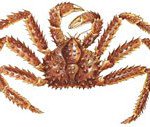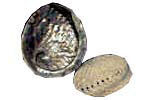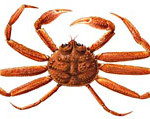
Paractopus dofleini
Although there are over 100 species of octopuses (Genus Octopus) in the world as well as numerous species of deepwater and pelagic octopuses (Order Octopoda), our knowledge of them comes almost entirely from just a few species. (Octopus vulgaris, Octopus bimaculatus, Enteroctopus dofleini, Eledone cirrhosa).
The Giant Pacific Octopus (Octopus dofleini) is the world’s largest species of octopus, weighing in at 18-25 kg with a 9.5m. arm span.. It has recently been re-classified as Enteroctopus dofleini. The genus Enteroctopus embraces the other giant octopuses of the world, viz. E. dofleini in the north Pacific, E. megalocyathus off S. America and E. magnificus off southern Africa.
Octopuses are cephalopod molluscs characterized by having eight arms, no tentacles, and the internal shell common to other molluscs has been lost. Octopuses can camouflage themselves by changing the colour and texture of their skin in a matter of seconds. This helps them to both avoid predation and ambush prey. Colour change is also used as a form of communication with other octopuses Enteroctopus dofleini occurs on the continental shelf of the North Pacific Ocean, where its range extends from southern California, north along the coastline of the Pacific Northwestern Americas, across the Aleutians, and south to Japan. It can be found at depths ranging from the intertidal to 750 m. and has a life span of 3-5 years.
Octopus dofleini usually mate only once. After mating, the male moves into deep water and die. The female lays up to 100,000 eggs on rocks or sandy bottoms at depths less than 50 metres over a period of several days. She will tend the eggs during the incubation period of 4 to 7 or more months, a period dictated by the ambient temperature. During this period the female will abstain from feeding and will die soon after the eggs hatch.
The octopus diet consists mainly of crustaceans and molluscs, most often small crabs and scallops. Other bivalves, snails, fish and other octopus are also eaten.








Social Profiles